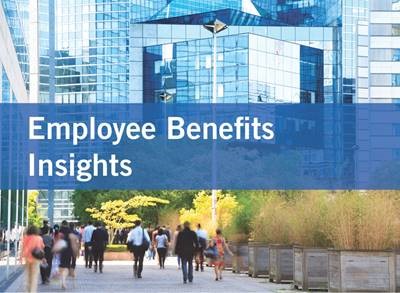Employee Benefit Plans: Applying the ERISA Controlled Group and Affiliated Service Group Rules in the Health Care Industry

Entities interested in entering into health care related endeavors must consider compliance with the corporate practice of medicine doctrine. In a number of states, the corporate practice of medicine doctrine prohibits corporations from practicing medicine or employing a physician to provide professional medical services. Although some states prohibit the corporate practice of medicine, states may provide an exception for professional corporations and many states provide an exception for employment of physicians by certain entities.
The friendly-PC model is a common structure designed to comply with state corporate practice of medicine doctrines. The friendly-PC model involves a professional service corporation (PSC) conducting a medical practice in affiliation with a management services organization (MSO). If structured and operationalized properly, the friendly-PC model is intended to withstand allegations that the management company or its owners are violating the prohibition on the corporate practice of medicine. See the following article for more information.
Although the friendly-PC model may be a solution to the corporate practice of medicine doctrine, it can create unintended consequences for employee benefit plans sponsored by the PSC and MSO.
ERISA’s Controlled Group and Affiliated Service Group Rules
Employee benefit plans are subject to complex rules under the Employee Retirement Income Security Act of 1974 (ERISA) and the Internal Revenue Code (Code). The controlled group and affiliated service group rules identify whether, for purposes of ERISA and the Code, two or more corporations and certain other groups of related trades or businesses are treated as one employer.
If two or more employers are considered a single employer, various rules under ERISA and the Code apply on a controlled group basis. The controlled group rules generally prevent employers from subdividing their employee populations into separate entities – one employing highly compensated employees and the other employing non-highly compensated employees – to provide richer benefits to the highly compensated employees.
Controlled Group Rules
Under the controlled group rules, the following groups are treated as one employer:
- Parent-subsidiary groups. A parent-subsidiary group consisting of a parent corporation and its, at least 80% owned, direct and indirect subsidiaries.
- Brother-sister groups. A brother-sister group exists when the same five or fewer individuals, estates, or trusts own an at least an 80% controlling interest in one or more trades or businesses, and the same five or fewer individuals, estates, or trusts own (in the aggregate) more than 50% of each entity.
- Combined parent-subsidiary and brother-sister groups. A parent-subsidiary group and a brother-sister group may be combined if the parent is a common member and the applicable requirements of both the parent-subsidiary and brother-sister tests are satisfied.
The application of these rules are more complicated than they may seem.
For purposes of the controlled group rules, certain types of ownership interests are excluded. For example, non-voting stock that is limited and preferred as to dividends is excluded. In addition, certain equity awards to employees may be excluded for purposes of determining an entity’s ownership.
The rules also include attribution rules, which treat certain persons as owning an interest in an entity that they do not actually own. For example, an individual may be treated as owning stock that one of their family members owns. For additional information see the following Foley blog.
In the context of a friendly-PC model, the PSC and MSO are usually not in the same controlled group of corporations. The friendly-PC model normally does not involve a parent-subsidiary relationship (i.e., a parent entity owning at least 80% of a subsidiary) or a brother-sister group (i.e., generally, five or fewer individuals, estates, or trusts owning and controlling multiple entities).
Affiliated Service Group Rules
An affiliated service group (ASG) is similar to a controlled group, but the analysis as to whether an ASG exists involves more than the ownership structure of two or more entities. As a result, they often exist in the context of the friendly-PC model.
The determination of whether an ASG exists requires an in-depth analysis of the relationships between service organizations to determine if the tests are satisfied. An ASG consists of a designated first service organization (FSO) and another service organization, which the proposed regulations call an A-organization (A-Org) or a B-organization (B-Org). An ASG also exists if there is a management group.
- First Service Organization. An FSO must be a corporation, partnership, or other organization that is principally engaged in the performance of services, such as health, consulting, and legal services.
-
- A-Organization. An A-Org is a service organization that is a partner or shareholder in the FSO (regardless of the percentage interest it owns in the FSO) and that either:
- regularly performs services for the FSO; or
- is regularly associated with the FSO in performing services for third persons.
Example: Dr. Smith incorporates his medical practice as a professional corporation, and that corporation is a partner in a medical practice with multiple other doctors who all regularly perform services for third persons. Dr. Smith’s incorporated medical practice is an A-Org and the medical partnership is the FSO.
- A-Organization. An A-Org is a service organization that is a partner or shareholder in the FSO (regardless of the percentage interest it owns in the FSO) and that either:
- B-Organization. An organization is a B-Org if it satisfies these three tests:
-
- a significant portion of the business of the B-Org consists of performing services for the FSO or for an A-Org of that FSO;
- the services that the organization provides are a type historically performed by employees in the service field of the FSO or the A-Org; and
- 10% or more of the interests in the B-Org is held by individuals who are highly compensated employees of the FSO or A-Org.
|
Example: Shiny Dental is a service organization with 11 partners. Each partner of Shiny Dental owns one percent of Teeth Cleaning Corporation’s stock. Teeth Cleaning Corporation employees perform all of the dental cleanings at Shiny Dental. Teeth Cleaning Corporation is a B-Org because (1) a significant portion of its business consists of providing services to Shiny Dental, (2) those services were historically performed by employees in the dental service field, and (3) 11% of the interests in Teeth Cleaning Corporation are owned by the Shiny Dental partners. |
- Management Groups. A management group exists when:
-
- an organization performs management functions; and
- the management organization’s principal business is performing management functions on a regular and continuing basis for a recipient organization.
|
Example: Family Hospital creates a new corporation for the sole purpose of employing the human resources and accounting departments of Family Hospital. The new corporation is in a management group with Family Hospital and these two organizations form an ASG. |
As noted above, the friendly-PC model often creates an ASG. Similar to the controlled group rules, employers in the same ASG are treated as a single employer under the Code, but members of an ASG are not treated as a single employer under ERISA. The inconsistent treatment of ASGs under the Code and ERISA leads to some odd results for ASG-sponsored health plans, including:
- Multiple Employer Welfare Arrangement (MEWA). If an ASG member sponsors a group health plan for all employers in the group, the plan is a MEWA under ERISA unless the ASG would also meet the controlled group tests under the Code. A MEWA is a group health plan sponsored by employers that do not meet the common ownership percentage required for a controlled group (i.e., parent-subsidiary group or brother-sister group). MEWAs are subject to state law and state enforcement, leading to a greater administrative burden. Additionally, MEWAs with less than 25% common control must file Form M-1 with the federal government or face penalties of more than $1,500 per day, even if the plan administrator was unaware that the plan was a MEWA.
- Affordable Care Act (ACA). Notwithstanding the above, ASGs are treated as a single employer for purposes of determining whether an entity is an Applicable Large Employer subject to the ACA’s employer mandate and reporting rules because that determination is made under the Code rules, not ERISA.
Lastly, special consideration must be given in the friendly-PC model before granting equity compensation to employees or independent contractors. Incentive stock options, which receive favorable tax treatment, may only be granted to employees of the employing corporation or a related corporation (a parent or subsidiary based on 50% common ownership). In addition, the deferred compensation rules under Code Section 409A include an exception for certain stock rights; however, this exception only applies if the stock award grants an interest in the entity the individual provides services to or an entity that has a controlling interest in that entity. Absent this exception, most stock-based awards would be subject to Code Section 409A and would fail to comply with its complex rules.
Prior to establishing a friendly-PC model, organizations should analyze how the friendly-PC model will affect their employee benefit plans. The friendly-PC model may be a solution to the corporate practice of medicine doctrine, but it can create complex employee benefit plan issues. A qualified ERISA attorney familiar with these rules should be consulted when designing a friendly-PC model to ensure compliance and to avoid common pitfalls.
 |
As part of Foley’s ongoing commitment to provide legal insight to our clients and colleagues, our Employee Benefits and Executive Compensation Group has a monthly newsletter we call “Employee Benefits Insights,” where we provide you with updates on the most recent and pressing matters concerning employee benefits and other related topics. Click here or click the button to the left to subscribe. |

